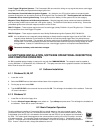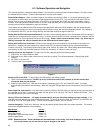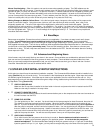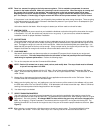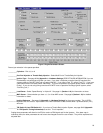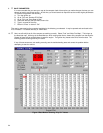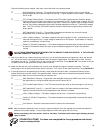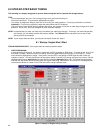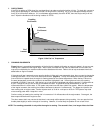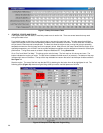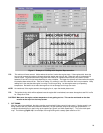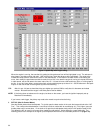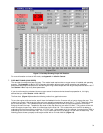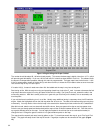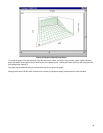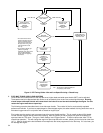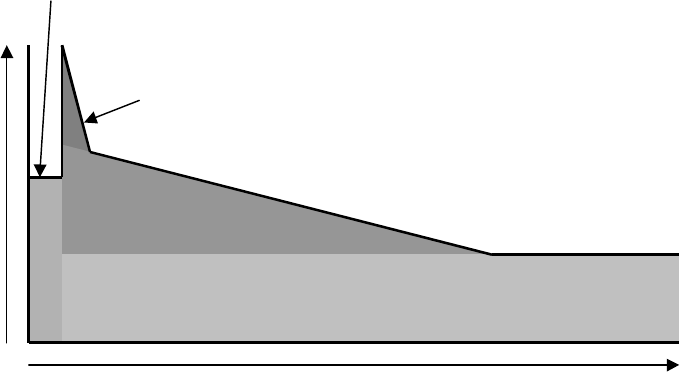
27
2. CHECK TIMING
If the ECU is getting an RPM signal, the next best thing is to make sure that the ignition is firing. To check this, connect a
timing light to spark plug #1, and make sure that it is firing while it is cranking. If it is, try to see approximately what the
timing is on the harmonic balancer. If it is not between approximately 0 and 40° BTDC, then that may be why it will not
start. Adjust the distributor until the timing is about 10° BTDC.
COLD Temperature HOT
Fuel
Amount
Fuel Map (Base Fuel Amount)
Coolant Modifier
Afterstart
Enrichment
Cranking
Enrichment
Figure 8 Idle Fuel vs. Temperature
3. CRANKING PULSEWIDTH
Figure 8 above is a graphical representation of the fuel that is injected at idle when an engine is started. As you can see,
cranking fuel is added until the engine starts. After it starts, the base fuel map value is determined from the main fuel
map and is multiplied by the coolant modifier and the afterstart enrichment. Refer to this to help understand how fuel is
added after an engine is started.
If the engine still won’t start and you are sure the ignition is firing and is set reasonably close, then you need to change the
cranking pulse width. Go to “Fuel” and “Startup Enrichment” (Figure 9). The top line indicates the cranking pulse width
(how much fuel is injected when the engine is cranking) based on the coolant temperature. When the key is turned on,
the area (temperature) at which the coolant is at should be highlighted in red. If the engine won’t start, the cranking
pulsewidth is USUALLY too small. With the key on go into the area highlighted and raise the amount 1-2 milliseconds at
a time. Change the cell you are on and the one before and after. A typical V8 should need between 10 and 20
milliseconds when it is cold to start. A TBI system may need more fuel than a Multi-Port system. When the temperature
of the engine increases, the cranking fuel needs to decrease (to about 4-10 milliseconds). The bigger the injectors, the
less cranking fuel an engine needs. Smaller injectors such as 19 lb./hr. multi-port or 45 lb./hr. TBI injectors may need
more cranking pulse width. Keep this in mind.
Continue raising or lowering the cranking fuel in increments of 1-2 milliseconds until the engine starts. Once again, the
base maps should allow the engine to start.
The other reason that it may not start is that there is not enough airflow present during cranking. You can open the front
throttle plates slightly to ensure enough air is entering. However, it is most likely the problem is from a lack of fuel.
NOTE: The cranking pulsewidth is only while the engine is starting. The second it fires, it no longer affects fuel flow.



